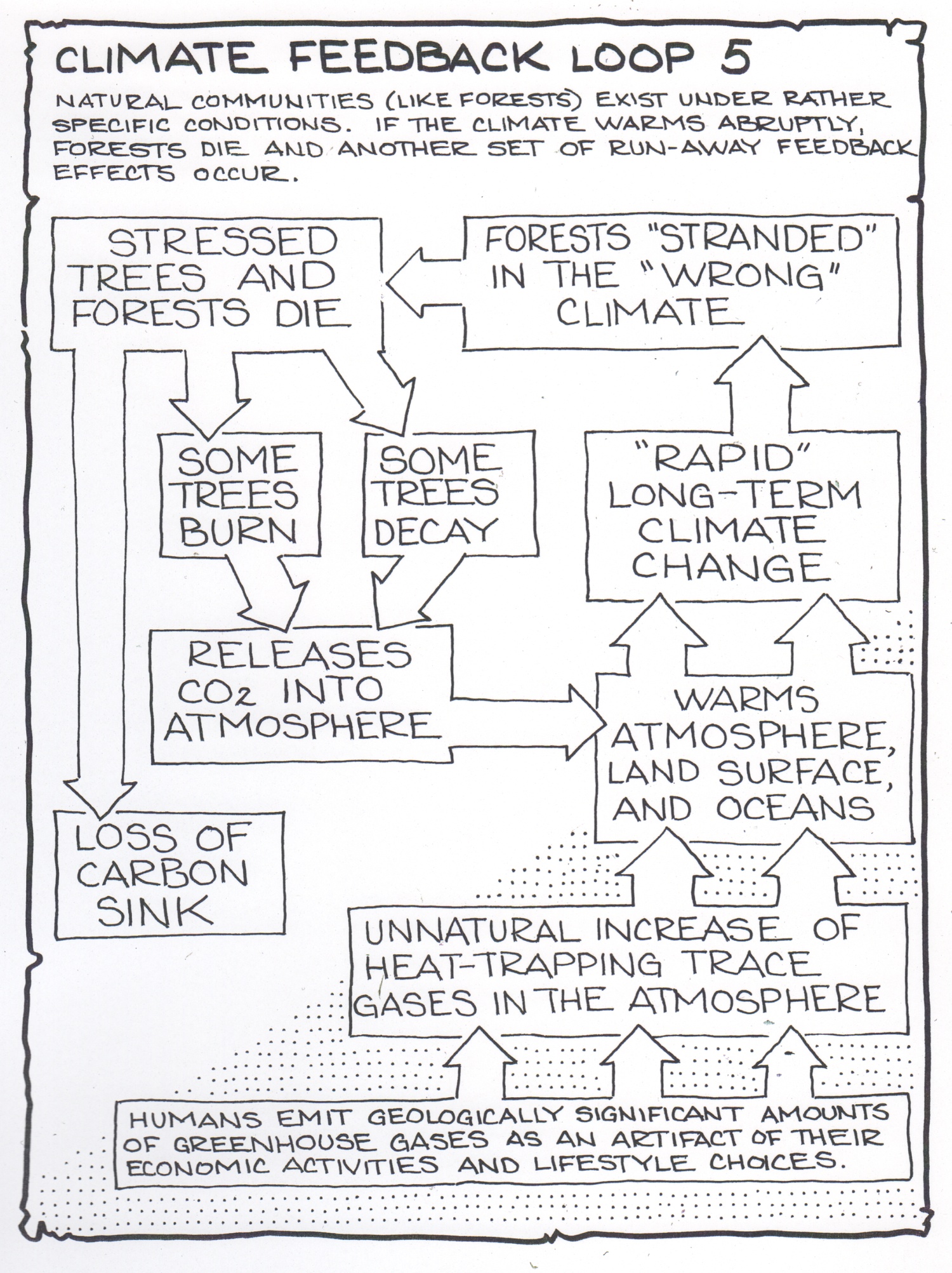This weekly blog post and its host website cover a wide variety of Fred Montague's environmental commentaries, gardening topics, and wildlife/art activities. Please browse the website and the blog archives for topics you are interested in.
Your Custom Text Goes HEre
This weekly blog post and its host website cover a wide variety of Fred Montague's environmental commentaries, gardening topics, and wildlife/art activities. Please browse the website and the blog archives for topics you are interested in.

The distribution of grasslands, forests, and deserts across the Earth's surface is the result of many variables, among which climate is a major determinate--especially mean annual temperature and mean annual precipitation.
Climate warming affects the world's vegetation.
As the Earth's average annual temperature trends upward under the influence of modern industrial human activity, vegetational communities like forests and grasslands find themselves, as climatologist Stephen Schneider explains, ' stranded in the wrong climate.'
Rapid climate change (i.e. over decades and centuries) provides stresses that overwhelm plants adapted to the previous 'normal' conditions. Many die. Dying forests present a double impact, as explained in the illustration below. One is that dead trees either burn (increased forest fires in a new drier climate) or if they don't burn, they decompose. In either case, the fast burn of fire or the slow burn of decomposition both release all of the carbon that had been stored in the trees themselves. The second impact is that regions that previously supported forests no longer have trees that serve as a carbon sink.
Logical action to minimize this climate feedback loop would involve eliminating carbon emissions (the source of carbon dioxide in the atmosphere) and planting trees where trees can grow (the sink for carbon dioxide in the atmosphere). Eliminate the source; re-establish the sink.

Climate Feedback Loop 5. © Fred Montague
David Archer is professor of geophysics at the University of Chicago. His 2009 book The Long Thaw: How Humans Are Changing the Next 10,000 Years of Earth's Climate, places our current human-caused climate event in the context of the Earth's geologic record. This short, well-written, and sometimes amusing account carefully explains the inadvertent, yet significant, climate impacts of our actions that vaporize a long-buried geological resource (fossil fuels) and in short order release its combustion products into the atmosphere.
Here are Archer's first two sentences (and a fragment) in the prologue: "Global warming could be one of humankind's longest lasting legacies. The climatic impacts of releasing fossil fuel CO2 to the atmosphere will last longer than Stonehenge. Longer than time capsules, longer than nuclear waste, far longer than the age of human civilization so far."
The book's contents.
Prologue: Global Warming in Geologic Time. Chapter 1: The Greenhouse Effect. Chapter 2: We've Seen It with Our Own Eyes. Chapter 3: Forecast for the Century. Chapter 4: Millennial Climate Cycles. Chapter 5: Glacial Climate Cycles. Chapter 6: Geologic Climate Cycles. Chapter 7: The Present in the Bosom of the Past. Chapter 8: The Fate of Fossil Fuel CO2. Chapter 9: Acidifying the Ocean. Chapter 10: Carbon Cycle Feedbacks. Chapter 11: Sea Level in the Deep Future. Chapter 12: Orbits, CO2 and the Next Ice Age. Epilogue: Carbon Economics and Ethics.
The 180-page paperback version's ISBN is 978-0-691-14811-3.

In public discussions about climate change, even among us Americans who understand that it is happening and who acknowledge that we are causing it, the topic usually is limited to carbon dioxide emissions from burning fossil fuels-- coal, oil, and natural gas. These are the sources for more than 85% of all commercial energy that we use in the U.S.
By adding carbon dioxide to the atmosphere, we enhance the Earth's greenhouse effect. The result is that the Earth's atmosphere absorbs heat that normally would be re-radiated into space. This is well understood by climate scientists and most others.
What most folks don't know or haven't been told about are the several climate feedback loops that are being set in motion by our planet-warming carbon emissions. The illustration below briefly explains one of the more apparent feedback mechanisms, the ice-albedo feedback loop.
If most people understood this "run-away" feedback effect, we would probably conclude that even the most drastic emission-limiting proposals are woefully inadequate to deal with the problem of global change. Here are summaries of three popular approaches that have been advanced by people who care. These have mostly been dismissed as too drastic.
1. We should reduce our carbon emissions to 80% of current levels by 2020. Or pick any percentage or any year.
2. We should stabilize atmospheric carbon dioxide concentrations at 350 ppm. Or pick any concentration.
3. We need to be carbon-neutral by 2050. Or pick any date.
By understanding the climate feedback loops one might conclude that an even more radical approach is necessary-- we must become carbon-negative yesterday. This means that we immediately emit no more carbon at all and start planting trees to temporarily sequester some of the atmospheric carbon dioxide in plant tissue. (Of course, we must also revolutionize our land-use strategies.)
These change-enhancing feedback loops take on a life of their own. So, if we stabilize the greenhouse effect today at present levels, the warming and ice-melting trend will continue which will cause more warming and ice-melting, etc. The loop will disappear only after there is no more ice and snow on the planet and after the climate is warm enough that no more snow falls and no ice forms.
We hear from scientists and other observers that global warming is happening faster than predicted. Most of the predictions have not included feedback loops.
The ice/albedo feedback loop is just one of several that we will discuss later.

© 2012